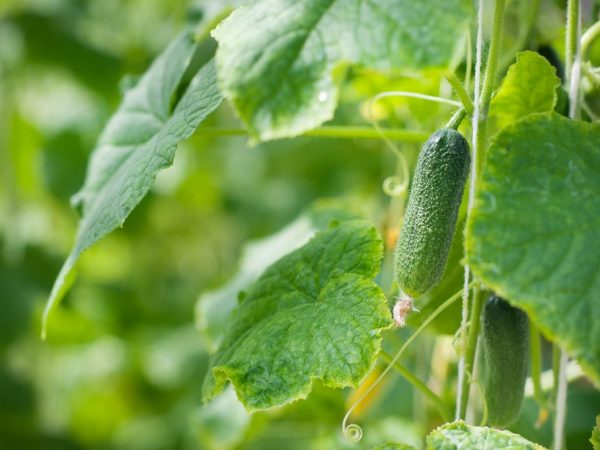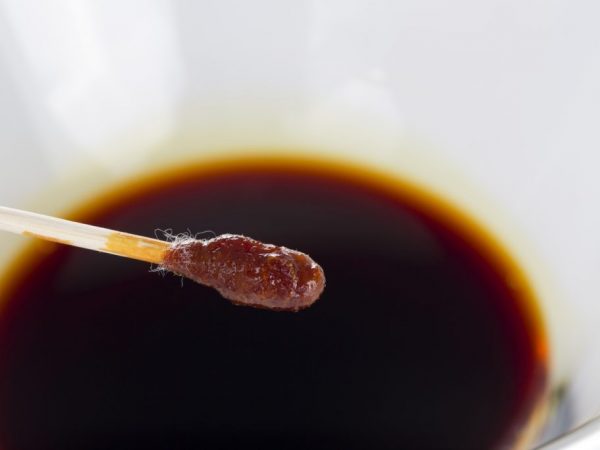What is iodine feeding for cucumbers for?
Today we will talk about how to properly feed cucumbers with iodine, in which cases this folk remedy is used. The fact is that iodine for cucumbers is a powerful antiseptic, which manifests its properties at the stage of crop growth. Thus, protecting against many fungal diseases and other diseases, it is used both for prevention and for treatment, and even as a component of feeding seedlings, it is from this aspect that we will begin our story.

Feeding cucumbers with iodine
Features of feeding
In order to feed the vegetable as efficiently as possible, it is advisable to use milk whey along with iodine. A similar mixture is recommended for both cucumbers and tomatoes. If the solution is used as a weapon in the fight against a variety of pests (for example, a whitefly butterfly), it is advisable to spray the bushes. The fact is that whey contains a large amount of nutrients that a cucumber needs. Firstly, it contains potassium, phosphorus, nitrogen and other amino acids, in addition, do not forget about iodine.
To prepare a fertilizer for spraying cucumbers with iodine, you need to add 1 liter of milk whey to 10 liters of water, as well as 10 ml, it is recommended to use the solution no more than once a month, you need to spray it when, according to the forecast, no rain is expected in the near future.
It is important not to overdo it with the concentration and frequency of watering, and also not to change the proportions of the ingredients yourself. The fact is that whey has a rather fatty structure, in addition, it has high acidity, which, if diluted incorrectly, can significantly disrupt the chemical composition of the soil. To determine how much solution is needed, it is worth taking as a basis one liter of the mixture for one adult bush. It is important to note that immediately after treatment with serum with iodine, you need to water the bushes generously, especially if you are growing the vegetable in a greenhouse.
Root and foliar feeding
- Iodine and cucumbers - is this possible? It turns out that a solution of iodine or Pharmayod in the process of growing a vegetable and caring for it is practically irreplaceable.
The described vegetable loves feeding very much, in order to collect a rich harvest, it is necessary to generously fertilize the crop.
- The foliar nutrition system is the best way to carry out preventive measures.
- The root nutrition system is produced by cultivating the soil for cucumbers.
Iodine to stimulate the growth of cucumbers
Even if iodine is contained in the smallest amount, its presence in the soil has a positive effect on the growth of the plant as a whole, significantly increasing the quantity and quality of the harvested crop. In addition, it is noted that with this type of feeding, the vegetable accumulates more vitamin C.
To achieve this effect, it will be enough to add just a few drops of an antiseptic to the irrigation water.
Also, iodine solution can be used during the germination of cucumber seeds. In this case, you need to use rain or settled water, the required volume is 3 liters, only 2-3 drops of iodine are added to it. After the seedlings are transferred to a permanent place of growth, it is worth watering again, while the concentration changes - three drops are needed per 10 liters of water.
It is important to note that it is worth watering with this solution when vegetables are grown in peat or podzolic soil, since such land has a rather poor composition. Alcohol is allowed to be added to the watering solution, it will also become an excellent prophylactic agent.
For the prevention of diseases of cucumbers
Spraying with water with iodine can and should be used for preventive purposes, for example, to prevent powdery mildew and other diseases.
For these purposes, you need to dilute 10 drops of the product in milk with a minimum percentage of fat, you should get a solution with a pleasant yellow color. Spraying is considered the ideal method of application, so you can protect each leaf of the bush. To improve the effect, you can add 20-30 ml of shampoo or liquid soap to the mixture (you can use grated laundry soap), this will help the composition to interact with the plant better.

Spraying iodine will prevent disease
If cucumbers grow in greenhouses or a greenhouse, it is advisable to start processing already 10 days after planting seedlings in the soil, usually at this time the first 3-5 leaves appear, provided that they are grown in open ground, this happens a little later. As for the duration of treatment, a ten-day treatment of cucumbers with iodine is recommended, until the vegetation stage ends. It is advisable to plan the treatment in such a way that the weather is dry, since precipitation can simply wash off the entire applied composition, this is, first of all, relevant for open ground conditions.
It is important to note the fact that it is absolutely harmless and safe to spray the solution over the lashes and tops, since all the components introduced do not accumulate in the vegetable, and are also completely absorbed by the soil without harming nature. To achieve the effect, it is important to apply the solution generously so that the mixture covers not only the leaves on both sides, but also the ground near the bush.
Fighting root rot
Iodine turns out to be quite effective in combating root rot, it is one of the most common diseases of the culture, which is not so easy to get rid of. To prepare a healing solution, you need only three ingredients, according to the recipe:
- Water
- Iodine
- Alcohol
- Soda
Moreover, the proportions should be such that the volume of water is equal to the volume of alcohol with iodine, soda will need 1 teaspoon. To cure gherkins from root rot, the stems are processed to a height of about 15 cm from the soil level. It is worth noting that the solution is especially effective for those cucumbers that grow vertically, that is, on trellises. It is noted that rot spores die already on the 5th day after treatment. It is worth saying that some gardeners replace iodine with brilliant green, considering that it contains all the necessary components to combat root rot.
For the treatment of late blight
If the cucumber bushes were affected by late blight, it is worth treating the culture with an iodine solution every 14 days. To prepare the mixture, according to the recipe for a folk remedy, you will need serum, iodine and hydrogen peroxide. In an ordinary bucket, you need to stir the whey, 50 drops of iodine, 2 tablespoons of hydrogen peroxide. Such spraying is recommended in the evening, so that the sun's rays do not fall on the leaves and do not cause burns.Experienced summer residents and gardeners say that fresh and sour milk is suitable for cooking, which is always available on the farm, especially if you keep your cows. Some of them recommend rubbing 2 tablespoons of the most common laundry soap into the solution.
You need to spray the prepared solution every ten days for 1.5-2 months. Thus, you can achieve not only getting rid of late blight, but also protect the bushes from other pests and fungi.
Getting rid of powdery mildew
Often, gardeners are faced with the problem of sudden yellowing and wilting of cucumber bushes, this can be a powdery mildew attack, this can happen in a greenhouse and in the open field. Here you can use a combined remedy, which includes treatment with an infusion of dead hay, as well as spraying the bushes with water with the addition of iodine.
There are many reviews that such an infusion on hay more than once saved the crop from powdery mildew, it is important to choose the right processing scheme for each specific crop. When it comes to cucumbers, ideally, you need to process the vegetable every day for three days, after which a 10-day break is taken. To prepare an infusion on hay, you need to put the dead hay in a wooden barrel, then fill it with warm water so that it covers the hay at least 15-20 cm, add 1 tablespoon of baking soda. After insisting for two days, filtering, you get the necessary solution, into which 10-20 ml of iodine is added later.
Zelenka or iodine
As mentioned earlier, every gardener strives to get an environmentally friendly crop, the cultivation of which did not use chemicals that are harmful to human health. One of the folk remedies for fertilization and preventive treatment of bushes is brilliant green. Just like iodine, brilliant green contains all the necessary components to combat diseases of cucumbers, as well as to enrich the soil for culture.
As for the proportion, the brilliant green is added to rain or settled water, while the following standards are observed:
- 10 liters of water
- 15 ml brilliant green
- 70 grams of urea
- Whey or sour milk - about 1 liter
The fact is that brilliant green contains copper, which endows the solution with powerful antiseptic properties, in addition, it is extremely important for fertilizing the soil. It is advisable to use a green solution on swampy soil, where there is practically no copper. In all other cases, experienced summer residents recommend the use of iodine, since its composition is much richer.


